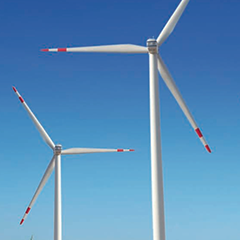New Department of Energy data shows that the states that use the most wind energy have seen the largest electricity rate declines, while consumers in the states that use the least wind energy have fared far worse. PES crunches the numbers…
The 11 states that produce more than seven per cent of their electricity from wind energy have seen their electricity prices fall by 0.37 per cent over the last five years, while all other states have seen their electricity prices increase by 7.79 per cent over that time period. Between the end of 2008 and the end of 2013, (11 states Texas, Wyoming, Oregon, Oklahoma, Idaho, Colorado, Kansas, Minnesota, North Dakota, South Dakota, and Iowa) more than doubled their operating wind power, increasing their wind capacity by 116 per cent, and saw marked changes in power prices for consumers as a result.
Many factors influence the price of electricity in addition to wind energy, such as fuel prices, consumer demand, generation mix, and others. However, there is clear evidence that wind energy helps to keep consumers’ electricity prices down.
With these savings, it’s easy to understand why the majority of Americans support wind power – Americans knows a good deal when they see it. According to a Navigant Research poll, 72 per cent of Americans support wind power, while a poll last month found more than 90 per cent of Kansans support greater use of wind power.
How does wind power benefit consumers?
Wind energy directly displaces the output of the most expensive and least efficient power plants that are currently operating. Like the functioning of almost any market, electricity market operators rank power plants based on their cost of producing an incremental amount of electricity. They then start by using the least-cost power plants first, and then move up the list (the supply curve) until they have enough electricity to meet demand. The power plant rank order is based on the cost of producing an incremental amount of electricity, so only fuel costs and variable O&M costs are considered.
As a result, wind energy and other zero fuel cost resources are always used first, and they are used to displace the most expensive power plant that otherwise would have operated. Because that is almost always the least efficient fossil-fired power plant, adding wind energy significantly reduces fossil fuel energy costs, as well as pollution



























